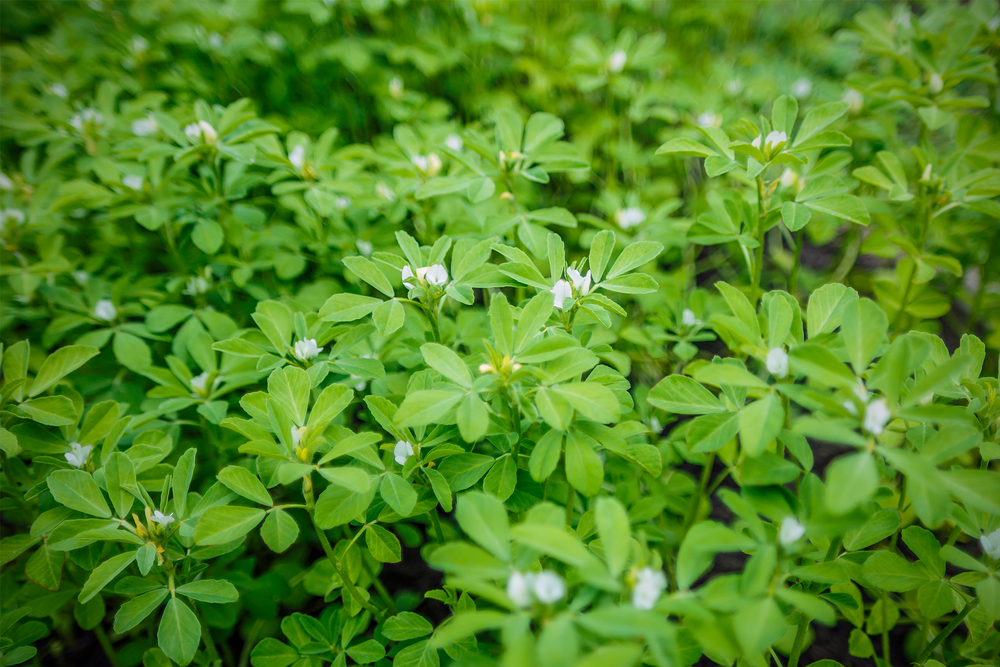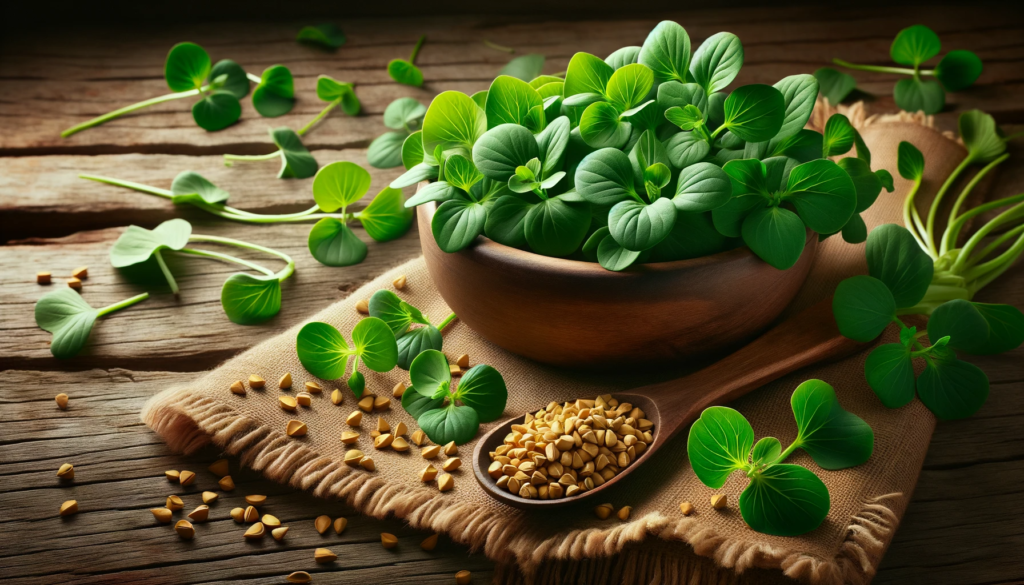The Flavor Profile of Fenugreek: Bitter yet Aromatic
Fenugreek, an integral spice in Ethiopian cuisine, is known for its distinctive bitter taste and aromatic qualities. Derived from the seeds of the Trigonella foenum-graecum plant, fenugreek adds a complex flavor to dishes. Its taste is often described as slightly bitter with a hint of sweetness, complemented by a nutty and celery-like aroma. This unique combination of flavors makes fenugreek a versatile ingredient in various Ethiopian spice blends and dishes, imparting depth and an exotic touch.
Fenugreek’s Role in Ethiopian Cooking and Culture
In Ethiopian cooking, fenugreek is more than just a spice. It is deeply embedded in the culinary culture, crucial in traditional dishes and spice mixtures. Fenugreek is a key ingredient in berbere, a fundamental spice blend in Ethiopian cuisine, contributing to its characteristic flavor. It’s also used in various stews, sauces, and legumes, enhancing the dishes’ unique taste and aroma. Beyond its culinary uses, fenugreek in Ethiopia is also appreciated for its health benefits, including aiding digestion and providing essential nutrients.
The Signature Taste of Fenugreek in Ethiopian Spice Blends
Fenugreek in Berbere: Crafting Ethiopia’s Iconic Spice Mixture
Berbere, the iconic spice blend of Ethiopian cuisine, owes much of its distinctive flavor to fenugreek. In this complex mixture, fenugreek seeds are combined with other spices like chili peppers, garlic, ginger, and basil, creating a rich, deep flavor profile. The bitter yet aromatic nature of fenugreek balances the heat of the chilies, adding depth and a subtle sweetness to the blend. Berbere is used extensively in Ethiopian cooking, seasoning dishes such as Doro Wat (chicken stew) and Misir Wat (lentil stew), imparting a warm, robust character.
Other Ethiopian Dishes Featuring Fenugreek
Apart from berbere, fenugreek is used in a variety of Ethiopian dishes, contributing its unique flavor and health benefits. It’s often found in legume-based dishes, such as Shiro Wat, where it complements the earthiness of the pulses. Fenugreek is also used in Tibs (sautéed meat dishes) and vegetable stews, enhancing the overall taste and adding nutritional value. Its versatility in Ethiopian cuisine showcases fenugreek’s ability to adapt to different flavor profiles, enriching many traditional Ethiopian recipes.

Culinary Techniques and Tips for Using Fenugreek
How to Select and Store Fenugreek for Authentic Flavors
When selecting fenugreek, you can choose between the seeds and the dried leaves, each offering different flavor profiles. The seeds are more bitter and are often roasted to enhance their nutty flavor before grinding. Fenugreek leaves, known as ‘Methi,’ have a milder taste and are used as a herb. Store fenugreek seeds in an airtight container in a cool, dark place to maintain their potency. Dried leaves should also be stored away from moisture to preserve their flavor. Fresh fenugreek leaves are best used soon after purchase but can be stored in the refrigerator temporarily.
Best Practices for Incorporating Fenugreek in Cooking
Fenugreek seeds should be used sparingly due to their strong flavor. Roasting the seeds gently before grinding can mellow their bitterness. Fenugreek can be added early in the cooking process to allow its flavor to infuse into dishes like stews and curries. The leaves can be used similarly to other herbs, added towards the end of cooking or as a garnish. Fenugreek pairs well with spices like cumin, coriander, and turmeric, making it a versatile ingredient in spice blends and a range of savory dishes.

Exploring Fenugreek Beyond Ethiopian Borders
Fenugreek in Other African and Global Cuisines
Fenugreek’s influence extends beyond Ethiopian cuisine, finding its place in other African and global culinary traditions. In North African countries, fenugreek seeds and leaves are used in traditional dishes, adding a distinctive flavor to tagines and couscous. In West African cuisine, it’s occasionally used in spice blends and stews. Globally, fenugreek is a staple in Indian cooking, particularly in curry powders, masalas, and as a key ingredient in dishes like Methi Chicken. Its versatility also makes it popular in Middle Eastern and Mediterranean cuisines, where it’s used in breads, pickles, and spice mixes.
Innovative Culinary Uses of Fenugreek Worldwide
As global cuisine evolves, fenugreek is being embraced for its unique flavor in innovative ways. Chefs worldwide are experimenting with fenugreek in fusion dishes, combining its distinctive taste with various culinary styles. It’s being used in vegetarian and vegan cooking for its rich, nutty flavor, and in health-focused dishes for its nutritional benefits. Fenugreek’s adaptability makes it a valuable ingredient in the modern culinary landscape, capable of enhancing a broad spectrum of recipes.
Creative Ethiopian Recipes with Fenugreek
Traditional Ethiopian Recipes Enhanced with Fenugreek
Rediscover classic Ethiopian dishes with a touch of fenugreek. A Fenugreek-Infused Doro Wat brings a new dimension to this beloved chicken stew with its subtle but distinct flavor. In vegetarian cuisine, a Fenugreek-Spiced Misir Wat transforms simple lentils into a richly flavored meal. For a unique side dish, try Injera (Ethiopian flatbread) with a hint of fenugreek, adding an aromatic twist to this staple.
Modern Twists on Classic Ethiopian Dishes Using Fenugreek
Experiment with contemporary interpretations of Ethiopian cuisine using fenugreek. A dish like Fenugreek-Seasoned Tibs elevates sautéed meat with its intriguing taste. For a fusion approach, consider a Fenugreek-Flavored Ethiopian-Italian Pasta, blending Ethiopian spices with Italian culinary techniques. Even desserts can be enhanced with fenugreek, as seen in a Fenugreek-Flavored Ethiopian Honey Cake, offering a sweet and spicy balance.
Fenugreek in Ethiopian Cuisine: FAQs
1. How Should Fenugreek Be Used in Cooking?
Fenugreek should be used sparingly due to its strong flavor. The seeds can be lightly toasted to reduce bitterness and ground or added whole to dishes. Fenugreek leaves can be used as a herb, either fresh or dried, to add a subtle flavor to curries and stews.
2. Can Fenugreek Be Used in Sweet Dishes?
Yes, fenugreek can be used in sweet dishes. It pairs well with spices like cinnamon and nutmeg in desserts, adding a unique flavor to cakes, breads, and pastries.
